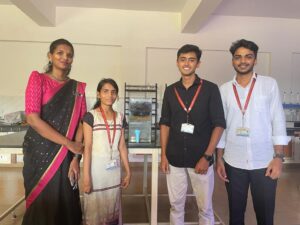 Water is an essential resource for various beneficial uses. Surface water and groundwater is extensively used to meet the various domestic and industrial demands. Increased urbanization and industrialization are discharging the wastewater into the environment without treatment. By the runoff and infiltration, the water is reaching surface and subsurface water bodies and contaminating the fresh water. Treating groundwater is costly and requires proper assessment. The key measure for effective management of groundwater is by preventing the seepage of waste water into aquifers.
Water is an essential resource for various beneficial uses. Surface water and groundwater is extensively used to meet the various domestic and industrial demands. Increased urbanization and industrialization are discharging the wastewater into the environment without treatment. By the runoff and infiltration, the water is reaching surface and subsurface water bodies and contaminating the fresh water. Treating groundwater is costly and requires proper assessment. The key measure for effective management of groundwater is by preventing the seepage of waste water into aquifers.
The selected study area is Udupi Taluk of Karnataka state, where the water from the unconfined aquifer is used more than the surface water. The subsurface water usage is much widely done in the region like Udupi. The lateritic soil in the region induces iron content to the water. Iron content in the water causes stains on the clothes, increases corrosive action of water, and leads to the growth of iron bacteria.
The higher concentration of iron in the region is may be due to point and non – point sources such as leakage from landfills, municipal sewers, septic tanks, infiltration of irrigation water containing pesticides and fertilizers, accidental spillage of paints and pigments, pollution from petrochemical and volatile organic compounds extensively used in industry, saltwater intrusion, etc. All these lead to major health effects and water-borne diseases.
The groundwater quality parameter such as iron content from randomly chosen open wells is analysed in the laboratory. The maps generated using interpolation approaches gives the variation of iron content and also the vulnerable or the sensitive areas with respect to iron. The generation of maps using GIS application acts as a decision support system for the administrators to take up preventive measures to reduce the water pollution in the area. In this filtration process is used to treat the higher iron content water samples, the low cost filter media sugarcane bagasse ash is used to treat the water with the greater efficiency of in the range of 70% and which is within BIS Limit.
The project is relevant to society as water is basic necessity, this kind of maps and low cost treatment will be having societal benefits. As the low cost media can be used in each and every household, the project also comes under lab to land theme.
Under the guidance of Dr. Deepika B V, Associate Professor, HOD of Civil Engineering Department the students are Adarsh, Adithya Krishna Bhat and Priyanka Dsouza, this project has been selected under the KSCST. The SMVITM management, Principal and Civil Department HOD congratulate the students for their success in this project.